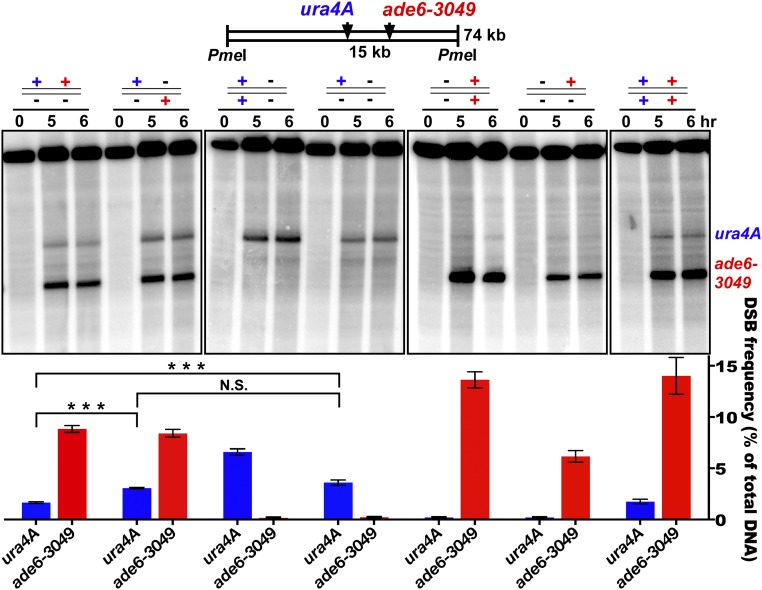
| PMC full text: | Published online 2018 Sep 14. doi: 10.1073/pnas.1801920115
|
Fig. 2.

DSB competition acts along a homolog (in cis) but not between homologs (in trans). ura4A (blue) and ade6-3049 (red) DSB hotspots on Chr 3 were on the same (in cis; leftmost lane set) or different (in trans, second lane set) parental homologs. +, hotspot present; −, hotspot absent. DSBs were assayed at the indicated times after induction of meiosis in rad50S [wild-type DSB distribution (59)]. Data (mean ± SEM; n = 3 or 4) show the percent of DNA broken at the indicated hotspot (assay probe at the right end of the PmeI fragment). The fourth lane set from the left (no ade6 hotspot) shows that the ura4A hotspot is reduced by ade6-3049 in cis (first lane set; ***P < 0.0005 by unpaired t test) but not in trans [second lane set; P > 0.07 by unpaired t test; N.S. (not significant)]. The first two lane sets show that ade6-3049 reduces the ura4 hotspot more in cis than in trans (***P < 0.0001 by unpaired t test). See SI Appendix, Table S3 for individual data and SI Appendix, Fig. S2 for additional competitive pairs.




